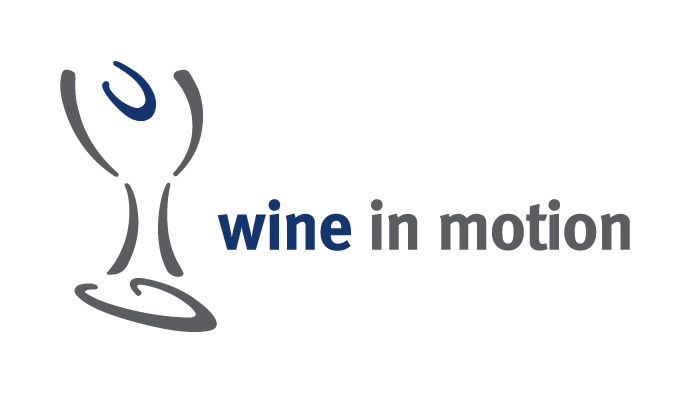Here a few FAQs on the motivation for our business model:
This is an essential subject and important to understand.
First of all: we are not keen on the cheapest price. That’s purely your decision. But there are a few guidelines that you should consider:
-
- Your DAP prices define all market prices automatically. Certainly your wine should always offer a good price to quality ratio to make the consumer feel good in the end
- Everyone will compare the prices online nowadays. Over the longer distance (between your home market and Europe e.g.) it’s maybe a bit less important – just if the difference is too big the buyer will feel ripped-off
If you have other European importers that are significantly cheaper, the consumer will buy from there only and your own stock here will not move.
-
- Demand is not generated by price but by prestige. The buyer then only moves to the cheapest source for your wine (if he can). Without prestige the consumer will compare your wines with alternative products – again you should remain competitive.
If you keep these simple rules in mind you set your prices like that:
- You use your normal FOB price and add “transaction costs”, which contains transport costs and an estimated average storage time. This is a difficult subject as nobody knows how long your wine remains on the shelf (and some move fast, some others don’t).
To make it easy for you we offer flat transport costs ex FOB to our warehouse incl. reloading (if shipping FCL with other producers!)
-
- 50€ per bottle ex NZ (North or South Island)
- 30€ per bottle ex CAN (Toronto)
- 28€ per bottle ex ZA (Capetown)
- We work only in Euros as the whole market pricing is in Euros and you must urgently make sure that your sales prices on the market remain stable for some time. So your price list has to be in €
Additional costs apply when shipping LCL only (in case your wines are sold out and urgent re-supply is required)
We will enquire other rates on request or give even lower rates if you book a full container and more.
BUT: due to the current crisis the transport costs are increasing – there might be changes ahead!.
A normal trade scenario would be:
An importer imports your wine and sells it to other market players. Each of these market players will have to add his mark-up. If his possible mark-up is not attractive enough he won’t sell your wine long-term. The more levels you have between you and the consumer, the more expensive the wine gets.
It’s certainly our aim to avoid too many levels, but realistically you need sales levels in-between to recommend your wine and build your prestige. Very important mediators are restaurants or fine wine retailers, the ones that really make recommendations. Our pricing scheme must reflect other levels of re-sale after our importation to keep your wine attractive for these partners.
The basis of everything is your DAP price. On that we add
-
- EU wine excise (paid by wine in motion!) when applicable. Some countries have bilateral agreements with the EU and waved the excise (e.g. CAN and ZA), from other countries it’s around 0.16 and 0.18€ per liter.
- Certain percentages depending on the volume we sell and to which market level or if the wines sell in original carton on pallet or have to be repacked in UPS cartons.
It’s almost impossible to find a reasonable and sustainable import partnership for wine producers because:
only a very small part of the wine business really imports in significant volume, and they normally have already a partner. There are always 100 times more producers willing to export than importers to list them.
whereas 99.99% of the buyers that would probably love to have your wine buy only in very small volumes and don’t import!
if you find an importer, he most likely works only regional, making it important to have several importers in the different regions. But as all markets grow together (and regional exclusivity is illegal!) these different importers get often into competition, causing an erosion of your brand (see also our separate “internet strategies” brochure).
Trading wines from New World is not very attractive for most market players for many reasons. These are:
finance mathematics
The profitability of a trade company is defined by how often it can turnover its stock investment per year. If you trade a regional wine the time to resupply takes only about 5 or 6 days and less. So you can take smaller volumes and only by the time you get low on stock, you need to order the next shipment. But as most producers offer deferred payment terms of 60 – 90 days on top, you have sold the stock before you have to pay it – or can offer more attractive payment terms to your clients.
Compared to this, New World producers have a huge disadvantage. Even extended payment of 180 days and more won’t help as an importer needs much more buffer stock due to long shipping times. Trading New World wines therefore requires up to 4 times higher stock investment to feed the same turnover.
trend to regionalisation
The market demands more local products, a stronger getting trend anywhere in Europe. This development is rising from many reasons, such as
-
- environmental thinking
- understanding the philosophy
- experience, e.g. from holiday visits
- cultural background
- education
Due to that development it is much easier to sell local than overseas wines. That fact forces a New World wine importer to work harder in order to find clients, in other words: the costs are higher to create sales.
limited shelf space
Due to less demand for New World wine, the shelf space that the trade offers for them is pretty limited. Sometimes a larger trader with 2 or 3000 wines on the shelf has only one single wine from New Zealand (and only Sauvignon Blanc), one from Argentina and two from South Africa. All larger wholesalers put only one brand from every important wine nation into their assortment as that is enough to fill most of their clients’ gaps. And they have chosen that supplier already long time ago (mainly an internationally acclaimed producer,) which closes this bottle neck for other wines producers for a very long time. So even though their might be a lot of interest from consumer side for your wines, you don’t manage to get through that bottle neck.
specialist importers with limited reach
That leaves the option to collaborate with smaller specialists with the problem to have lesser reach in the market, smaller volumes and worse: being less attractive for the market as there is a cost saving trend in the business to reduce the amount of suppliers (that means: more and more buy their niche wines from the main wholesaler instead of the specialist).
Most of the time you have a very long lead procedure to set foot into a new market, starting with research and extensive communication, sending samples etc. Often you are visiting wine shows and maybe even several prospects. That can easily amount to a few 10,000€ quickly. But only time will tell you if you are successful with your partner, if you could find a reasonable one at all. And in the end this relationship can be very volatile through many reasons. So the set-up investment can get lost again very quickly and you start again from the scratch.
Several importers in the same or neighbouring markets always get into competition. Competition sounds like an attractive thing, but most of the time the trade partners go the easiest way and sell via the cheapest price only (which requires only little communication compared to storytelling or service), leading to a price erosion and with that a step-by-step damaging of your brand.
To reduce this risk many producers try to give market exclusivity, but as a matter of fact this is highly illegal nowadays as free trade and free market development is granted by many laws and a breach of that can be sued with excessive fees.
But especially in the age of internet physical boundaries make less and less sense anyway and all consumers compare prices online immediately.
Together we can try to maintain the European market as wide as possible.
With storing your wines in Europe you have brought down the initial main hurdle and waved all preliminary exploration costs with one move.
You start sales immediately as you get also available on all lists and don’t need to send samples from the far distance but right from within the market at local prices.
We split all costs that we buy at wholesale terms between our partners, e.g. the shipping via full container load (compared to more expensive LCL rate), we get better prices for warehousing, parcel shipping and wine show participation.
This list can be continued
First we have to identify the reasons, why sales stagnate. Very often the reason is a lack of brand attractiveness. Due to our tool box we can take measurements to change that immediately, though all brand development certainly takes time and won’t go over night.
Solutions will be
-
- sending the wines to competitions, bloggers and journalists
- using our joint media network to get talked about the wines
- organising events and sales specials
- and many more possibilities
All of that activity has to be driven by the will to create a higher value and better perception of your wine in the markets.
Certainly. We can take your wines off the price list dedicated to certain countries automatically if you want to. Online this is no allowed anymore (forbidden geo tracking), but we will refrain from all activities touching your existing partnerships. An alternative will be to supply your current partners also from your European warehouse with your own terms.
Certainly any time – with a short lead-time in order to fulfil all order obligations from our side
There can be many reasons for you to exit the market, for example
-
- sales stagnate despite all activities
- re-branding
- changed ownership or ending business
Alternatives to taking wine back might be
-
- forwarding in full or split volumes to other markets
- sell-off strategies
You might have more question, wishes or ideas, so please don’t hesitate to ask.
Feel free to contact us!

